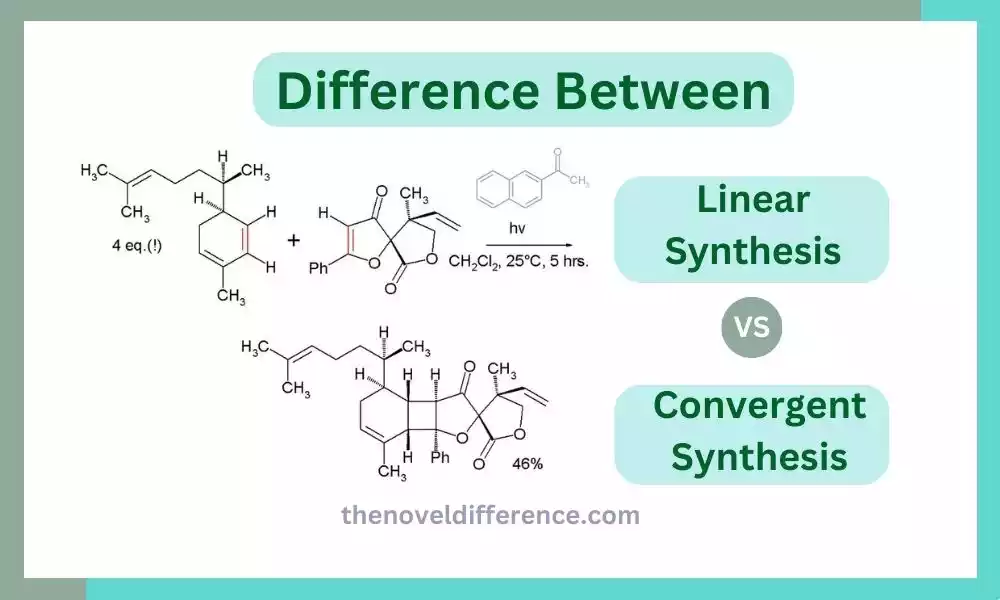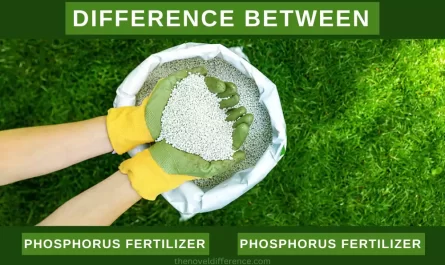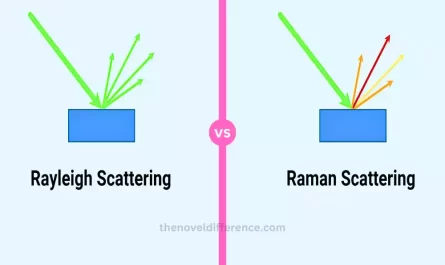When it comes to chemical synthesis, scientists employ various methods to create complex molecules for a range of applications. Two common approaches are linear synthesis and convergent synthesis. Understanding the difference between these two methods is crucial for researchers and chemists alike. We will delve into the intricacies of linear and convergent synthesis, exploring their unique characteristics, advantages, and limitations. So, let’s embark on this chemical journey and unlock the secrets of these synthesis techniques.
Definition of Linear and Convergent Synthesis
Linear Synthesis: A linear synthesis is a stepwise approach to sequentially building a target molecule, starting from simple precursor compounds and progressing through a series of reactions. It involves the systematic addition of one building block or functional group at a time until the desired molecule is fully synthesized. The process typically involves the purification and characterization of intermediates at each step before proceeding to the next. Linear synthesis is often employed for smaller and less complex molecules and is characterized by its simplicity and straightforwardness.
Convergent Synthesis: Convergent synthesis is a strategy that involves the independent synthesis of smaller intermediate fragments, which are then combined to form the final target molecule. M branches or synthetic routes are used to generate individual fragments, and these fragments are subsequently joined together through a final coupling step. The approach allows for the efficient use of resources and offers flexibility in modifying and optimizing the individual fragments independently. Convergent synthesis is particularly suitable for larger and more complex molecules and is often chosen when scalability and flexibility are desired.
Importance of synthesis in various fields, such as drug discovery and materials science
Synthesis plays a crucial role in various fields, including drug discovery and materials science.
Here are the key reasons why synthesis is important in these areas:
1. Drug Discovery:
a. Access to new compounds: Synthesis allows chemists to create novel compounds with desired properties that may not be readily available in nature. This enables the exploration of a wide range of chemical space to identify potential drug candidates.
b. Structure-activity relationship (SAR) studies: Synthesis helps in generating analogs and derivatives of known compounds to study the relationship between chemical structure and biological activity. This information guides the design and optimization of drug molecules with improved efficacy, selectivity, and safety profiles.
c. Medicinal chemistry optimization: Synthesis allows for the modification of lead compounds to enhance their pharmacokinetic properties, such as solubility, bioavailability, and metabolic stability. It also enables the introduction of functional groups for targeted drug delivery and controlled release.
d. Scale-up for preclinical and clinical studies: Synthesis enables the production of drug candidates in larger quantities to support preclinical testing, formulation development, and subsequent clinical trials.
2. Materials Science:
a. Tailored materials design: Synthesis allows for the precise control of composition, structure, and morphology, enabling the creation of materials with specific properties for various applications. This includes materials with desirable mechanical, electrical, optical, and magnetic properties.
b. Nanomaterial synthesis: Synthesis methods are crucial for the production of nanomaterials, such as nanoparticles, nanowires, and nanocomposites. These materials exhibit unique properties and have applications in areas like electronics, catalysis, energy storage, and biomedicine.
c. Advanced functional materials: Synthesis enables the development of advanced materials, such as biomaterials, superconductors, photovoltaics, and flexible electronics, which have the potential to revolutionize industries and technologies.
d. Process optimization and scalability: Synthesis allows researchers to optimize and scale up the production of materials, ensuring consistent quality and reproducibility. This is essential for industrial applications and commercialization.
Synthesis serves as a fundamental tool for innovation, enabling the creation of new molecules and materials with tailored properties, leading to advancements in healthcare, technology, and various other sectors.
What is Linear Synthesis?
A linear synthesis is a stepwise approach to sequentially constructing a target molecule. It involves the systematic addition of one building block or functional group at a time, starting from simple precursor compounds. The process proceeds through a series of reactions, with each step building upon the previous one.
The synthesis route progresses linearly, with intermediates being generated and transformed into the next intermediate or the final molecule until the desired compound is obtained. Each intermediate is typically purified and characterized before proceeding to the next step.
The key characteristic of linear synthesis is its sequential nature, where each reaction step is performed one after another, following a predetermined pathway. This approach allows for the controlled and stepwise construction of the target molecule.
Linear synthesis is commonly used for the synthesis of smaller and less complex molecules. It offers simplicity and straightforwardness in terms of reaction planning, optimization, and modification. It allows chemists to design and manipulate the molecular structure by carefully selecting and introducing the necessary building blocks linearly.
Linear synthesis provides a clear and systematic strategy for constructing molecules, enabling chemists to achieve the desired target compound through a series of consecutive reactions.
Sequential nature of linear synthesis
The sequential nature of linear synthesis refers to the stepwise progression of reactions and transformations in a predetermined order. In linear synthesis, each step builds upon the previous one, creating a chain of reactions that ultimately leads to the formation of the desired target molecule.
The sequential nature of linear synthesis can be understood through the following key points:
1. Building blocks: Linear synthesis involves the addition of building blocks or functional groups, one at a time, to the growing molecule. These building blocks are selected based on their compatibility with the reaction conditions and their ability to introduce specific functional groups or structural elements.
2. Reaction sequence: The reactions in linear synthesis are planned in a specific order to achieve the desired chemical transformations. Each reaction step is designed to introduce specific modifications or functional groups into the molecule, expanding its complexity and size.
3. Intermediate purification: After each reaction step, intermediates are often purified and characterized to ensure their identity and purity. This purification step removes impurities and byproducts from the reaction, allowing for the isolation and analysis of the intermediate compound before proceeding to the next step.
4. Iterative process: Linear synthesis typically involves repeating the reaction sequence iteratively until the desired target molecule is obtained. Each iteration adds a new building block or functional group to the growing molecule, gradually constructing its final structure.
The sequential nature of linear synthesis provides a clear and organized approach to building complex molecules. It allows chemists to plan and execute reactions systematically, ensuring controlled and predictable transformations. This sequential progression facilitates optimization, modification, and troubleshooting at each step, enabling the synthesis of target molecules with a high degree of precision and efficiency.
Steps involved in the linear synthesis
The steps involved in linear synthesis can vary depending on the specific target molecule and the synthetic route chosen.
The following steps are commonly involved in linear synthesis:
1. Target molecule selection: Determine the desired target molecule based on the desired properties or biological activity. Consider factors such as size, complexity, and functional groups required.
2. Retrosynthetic analysis: Perform a retrosynthetic analysis to break down the target molecule into simpler building blocks or intermediates. Identify key functional groups and bonds that need to be formed.
3. Building block selection: Select appropriate building blocks or precursor compounds that will be used to construct the target molecule. Consider factors such as availability, reactivity, and compatibility with the desired reactions.
4. Protection and functional group manipulation: If necessary, protect specific functional groups in the building blocks to prevent unwanted reactions during subsequent steps. Modify the functional groups on the building blocks as required to facilitate their reactivity in the desired reactions.
5. Stepwise reactions: Perform a series of chemical reactions, typically one at a time, to introduce the building blocks and functional groups into the growing molecule. Each reaction is carefully designed to achieve specific transformations, such as bond formation, functional group modification, or stereochemical control.
6. Intermediate purification and characterization: After each reaction step, purify the reaction mixture to isolate the desired intermediate compound. Analyze and characterize the intermediate using techniques such as spectroscopy, chromatography, or crystallography to confirm its identity and purity.
7. Iterative process: Repeat the reaction sequence iteratively, incorporating additional building blocks or functional groups at each step. Each iteration builds upon the previous one, gradually constructing the target molecule.
8. Final deprotection and purification: Once all the necessary building blocks have been incorporated, remove any protecting groups and carry out final purification steps to obtain the final target molecule. Purification methods may include techniques such as chromatography, crystallization, or distillation.
9. Characterization and analysis: Characterize the final target molecule using various analytical techniques to confirm its structure, purity, and desired properties. Analytical methods may include spectroscopy (NMR, IR, MS), chromatography (HPLC, GC), and elemental analysis.
It is important to note that the above steps are general guidelines and may vary depending on the complexity and specific requirements of the target molecule. Optimization, modification, and troubleshooting may be necessary throughout the synthesis process to achieve the desired target molecule efficiently and with a high yield.
What is Convergent Synthesis?
Convergent synthesis is a strategy in organic chemistry that involves the independent synthesis of smaller intermediate fragments, which are then combined to form the final target molecule. In convergent synthesis, multiple branches or synthetic routes are employed to generate the individual fragments, and these fragments are subsequently joined together through a final coupling step.
The key features of convergent synthesis are as follows:
1. Independent fragment synthesis: The target molecule is divided into smaller, more manageable fragments. Each fragment is synthesized independently using its synthetic route. This approach allows for greater flexibility and control over the synthesis of each fragment.
2. Final coupling step: Once the individual fragments are synthesized, they are brought together and connected in a final coupling step. This coupling reaction joins the fragments to form the desired target molecule. The coupling step may involve the formation of a new bond, such as a carbon-carbon or carbon-nitrogen bond, depending on the specific target molecule and coupling chemistry chosen.
3. Modularity and scalability: Convergent synthesis offers modularity, as the synthesis of each fragment can be optimized independently. This modularity allows for the introduction of modifications or variations in specific fragments without affecting the synthesis of the entire target molecule. Additionally, convergent synthesis is highly scalable, as the fragments can be synthesized in larger quantities and then combined to assemble the target molecule on a larger scale.
4. Flexibility and efficiency: Convergent synthesis provides flexibility in terms of the order in which fragments are synthesized and coupled. This flexibility allows for the exploration of different synthetic pathways and strategies to achieve the desired target molecule efficiently. It also enables the incorporation of diverse structural features and functional groups from different fragments.

Convergent synthesis is particularly useful for the synthesis of larger and more complex molecules, where a linear stepwise approach may become challenging or impractical. It allows for the efficient utilization of resources and optimization of synthetic routes for each fragment independently.
Additionally, convergent synthesis offers flexibility in modifying and optimizing the individual fragments, facilitating the synthesis of structurally diverse and functionally complex molecules.
Advantages of convergent synthesis
Convergent synthesis offers several advantages that make it a valuable strategy in organic chemistry.
Some of the key advantages of convergent synthesis are:
1. Efficient use of resources: Convergent synthesis allows for the independent synthesis of smaller fragments, which can be optimized and produced in larger quantities. This approach reduces waste and maximizes the utilization of resources by avoiding the repetition of synthesis steps for the entire target molecule.
2. Scalability: Convergent synthesis is highly scalable, as the individual fragments can be synthesized in larger quantities and then combined to assemble the target molecule on a larger scale. This scalability is particularly advantageous for the production of complex and larger molecules.
3. Flexibility in modification and optimization: Convergent synthesis provides flexibility in modifying and optimizing individual fragments independently. It allows for the incorporation of diverse structural features and functional groups from different fragments, enabling the synthesis of a wide range of complex molecules. This flexibility facilitates structure-activity relationship (SAR) studies and the exploration of different variations and modifications to improve the properties of the final molecule.
4. Reduces synthetic challenges: Convergent synthesis can simplify the overall synthesis process by breaking it down into smaller, more manageable fragments. This approach can be particularly useful when dealing with complex or challenging synthetic steps, as it allows for the optimization of each fragment’s synthesis independently.
5. Diversification and late-stage functionalization: Convergent synthesis facilitates the late-stage functionalization of the fragments, which can enhance the synthetic efficiency and enable the introduction of specific functionalities in the final molecule. This diversification of the fragments allows for the rapid synthesis of structurally diverse compounds and the exploration of broader chemical space.
6. Modular approach: Convergent synthesis offers a modular approach, where different fragments can be synthesized and combined in various ways to create different molecules. This modularity provides flexibility in the design and synthesis of complex molecules, allowing for the rapid generation of diverse analogs and derivatives.
Convergent synthesis provides efficiency, scalability, flexibility, and the ability to address synthetic challenges associated with complex molecules. These advantages make it a valuable strategy for the synthesis of a wide range of compounds, including pharmaceuticals, natural products, and advanced materials.
Comparison Chart
Here is a comparison chart highlighting the key differences between linear synthesis and convergent synthesis:
| Aspect | Linear Synthesis | Convergent Synthesis |
|---|---|---|
| Strategy | Stepwise addition of building blocks | Independent synthesis of fragments |
| Fragment Synthesis | Sequentially, one at a time | Independently, separately optimized |
| Coupling Step | N/A | The final step to joining fragments |
| Complexity | Smaller and less complex molecules | Larger and more complex molecules |
| Resource Utilization | Potentially higher resource utilization | Efficient utilization of resources |
| Scalability | Limited scalability | Highly scalable for larger molecules |
| Synthetic Planning | Straightforward and linear | Modular approach with flexibility |
| Modification | Changes may require altering the synthesis route | Modifications can be made to specific fragments |
| Examples | Peptide synthesis, organic molecules | Natural product synthesis, polymers, drugs |
| Applications | Drug discovery, materials science | Total synthesis, polymer synthesis, etc. |
Please note that the chart provides a general comparison and there may be variations and exceptions depending on specific cases and synthetic strategies employed in different contexts.
Examples and Applications
Examples and applications of linear and convergent synthesis can be found in various fields of chemistry. Here are some specific examples:
Examples of Linear Synthesis:
1. Peptide synthesis: Linear synthesis is commonly used in the production of peptides, where the amino acids are added one by one to form the linear peptide chain. This stepwise addition of amino acids follows a linear sequence to construct the desired peptide.
2. Total synthesis of natural products: Linear synthesis is often employed in the total synthesis of complex natural products, such as alkaloids, terpenes, and polyketides. The target molecule is constructed step by step, starting from simple precursors and building up the complexity in a linear fashion.
3. Organic molecule synthesis: Linear synthesis is utilized in the synthesis of various organic molecules, such as pharmaceutical intermediates, agrochemicals, and functional materials. It allows for the controlled addition of functional groups and building blocks to create specific chemical structures.
Examples of Convergent Synthesis:
1. Total synthesis of complex natural products: Convergent synthesis is particularly useful in the total synthesis of highly complex natural products. The target molecule is divided into smaller fragments, which are independently synthesized. These fragments are then combined in a final coupling step to assemble the intricate structure of the natural product.
2. Polymer synthesis: Convergent synthesis is employed in the synthesis of polymers, where smaller polymer chains or monomers are independently prepared and subsequently combined to form a larger polymer through coupling or polymerization reactions.
3. Drug synthesis: Convergent synthesis is utilized in the synthesis of pharmaceutical compounds. The target drug molecule can be divided into smaller fragments, which are independently synthesized. These fragments can then be coupled to form the final drug compound, allowing for efficient optimization and modification of different regions of the molecule.
4. Materials synthesis: Convergent synthesis is applied in the synthesis of complex materials, such as dendrimers, nanoparticles, and nanocomposites. The individual components or building blocks are synthesized independently and then combined to form the final material structure, offering control over properties and functionalities.
Both linear and convergent synthesis find applications in drug discovery, materials science, and various branches of organic chemistry. They provide strategies for constructing complex molecules and materials, enabling the synthesis of novel compounds with desired properties for various applications.
Conclusion
The difference between linear and convergent synthesis lies in their approach to constructing complex molecules. Linear synthesis follows a step-by-step assembly, providing controlled construction but facing challenges with highly complex structures.
Convergent synthesis, on the other hand, merges independently synthesized fragments, offering increased efficiency and scalability. By understanding the advantages and limitations of these synthesis methods, chemists can make informed decisions and optimize their approach to create the molecules that drive innovation and progress in various fields.




